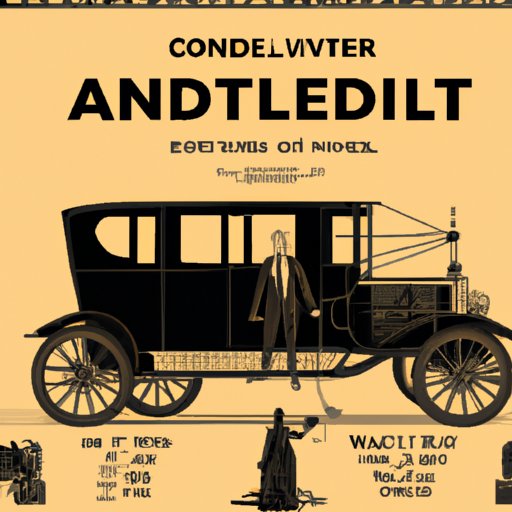
Introduction
Cornelius Vanderbilt – a legendary figure in American history, renowned for his immense wealth and influence over the country’s economy. As one of the wealthiest Americans in history, Vanderbilt’s story is one of rags to riches – a tale of ingenuity and business savvy that allowed him to build an empire from scratch.
In this article, we will explore the life and career of Cornelius Vanderbilt, examining how he came to obtain his vast fortune, and analyzing the social and economic landscape of the 19th century that enabled him to do so. We will also examine the lasting impact of Vanderbilt’s wealth and influence on modern-day America.
Vanderbilt’s Rise to Wealth
Cornelius Vanderbilt’s story begins in humble origins. Born in 1794, Vanderbilt started out as a ferry operator in New York City, working alongside his father. His business proved successful, and he gradually expanded into the steamship industry, utilizing the latest technology and innovations to dominate the market.
Vanderbilt was not content with merely running a successful business, however. He sought to expand his reach and solidify his position as a dominant force in the industry. Through strategic investments and bold business moves, Vanderbilt acquired numerous companies and entered new markets, allowing him to control a vast network of steamships and shipping routes.
One pivotal moment came in the 1850s, when Vanderbilt successfully undercut competitors’ prices and drove them out of business. He then formed a monopoly over the lucrative New York-to-New Orleans shipping route, effectively controlling the transport of goods and people between the North and the South.
The Social and Economic Conditions of the 19th Century
To understand Vanderbilt’s success, we must examine the broader economic and societal climate of the 19th century. The era was marked by rapid industrialization, as new technologies and innovations allowed for mass production and increased trade. The rise of capitalism also played a significant role in enabling Vanderbilt’s success, as entrepreneurs like himself sought to capitalize on the expanding markets and opportunities.
The transportation industry was a key driver of this economic growth, as steamships and railroads connected previously disparate regions, allowing for faster and more efficient movement of goods and people. Vanderbilt’s success therefore ties into a broader trend of innovation and expansion within the transportation sector, highlighting the interconnectivity of various industries in the economy.
Vanderbilt’s Investment Strategies
Vanderbilt was known for his shrewd investment strategies, which allowed him to grow his wealth even further. He diversified his portfolio by investing in a range of industries, including the railroad and telegraph industries. It was through his investments in the railroad industry that Vanderbilt was able to expand his reach and wealth even further.
By the 1860s, Vanderbilt had made significant investments in railroads, allowing him to control even more of the transportation market. His purchase of the New York and Harlem Railroad in 1863 marked a turning point, as he was able to consolidate numerous railroads under his control and effectively create a monopoly in the industry.
Vanderbilt’s Philanthropy and Legacy
Despite his immense wealth, Vanderbilt was not one to shy away from philanthropy. He donated millions of dollars to various causes, including hospitals and universities, seeking to leave a lasting positive impact on society.
However, Vanderbilt’s legacy is not without its controversies. His ruthless business tactics and consolidation of power led to accusations of monopolistic behavior and stifling of competition. Additionally, his immense wealth served to widen the gap between rich and poor, exacerbating existing societal inequalities.
Modern-Day Implications
The legacy of Cornelius Vanderbilt is still felt in modern-day America, particularly within the transportation industry. His consolidation of power serves as a cautionary tale for anti-trust regulators, highlighting the dangers of allowing a single individual or company to control an entire industry.
Furthermore, Vanderbilt’s philanthropic efforts and impact on American society underscore the role that immense wealth can play in shaping the country’s social and economic landscape. The influence of wealthy individuals and corporations on politics and society is still a hotly debated topic, highlighting the ongoing relevance of Vanderbilt’s legacy today.
Conclusion
Cornelius Vanderbilt’s story is a remarkable tale of success in the face of adversity. His rise to wealth and influence stands as a testament to the power of innovation, hard work, and savvy business sense. However, his legacy also highlights the darker side of immense wealth and monopolistic power, underscoring the importance of understanding the broader economic and societal conditions that contributed to his success.





